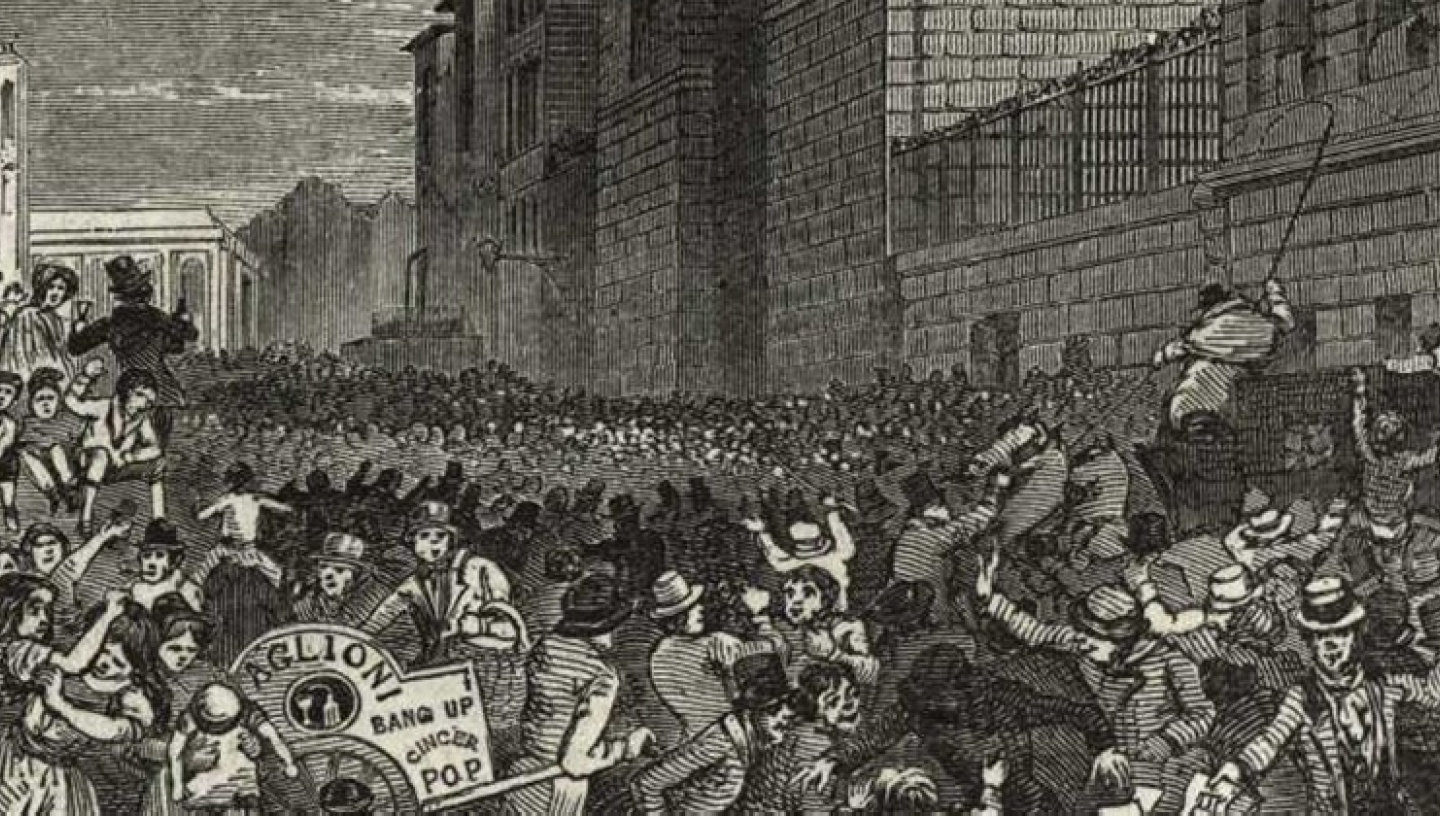
The societal fascination with sensational malefactors has a long history, evidence of which can be found within the Caird Library's rare book collection
Stories of crimes and their perpetuators seem to have had a renaissance in the public consciousness over the last few years. However, this societal fascination in sensational malefactors can be observed far earlier. Indeed, several instances of this can be found within the Caird Library's rare book collection, including several editions of the Ordinary of Newgate's Accounts.
These accounts were written by the Ordinary of Newgate prison and contained the names and crimes of those sentenced to death, along with accounts of the Ordinary’s visits to the prisoner and their final moments before their execution. The five copies held within the library focus primarily on individuals convicted of piracy and show a developing publication and provide an insight into public attitudes of the eighteenth century, in addition to valuable biographical information.
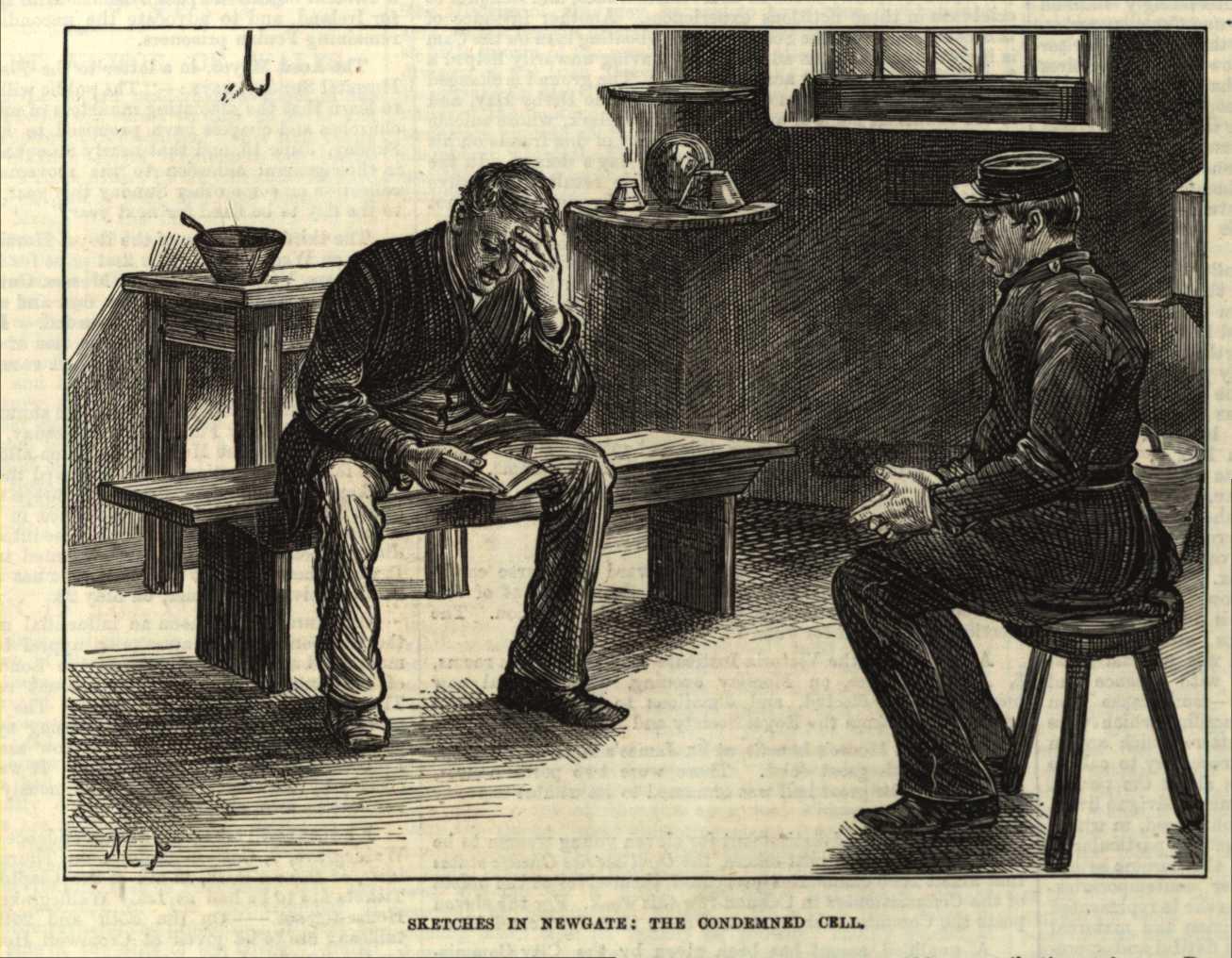
As the chaplain of Newgate Prison, the Ordinary was responsible for the spiritual care of the population imprisoned there. In practice, this comprised of reading prayers, delivering sermons and preaching to inmates. The most important aspect of the Ordinary’s position however, was to attend to those within Newgate who had been condemned to death.
By all accounts the job was not a pleasant one, with conditions in the prison reaching abhorrent levels of squalor and overcrowding. The prison remained just as abject and congested despite government funding designated for its restoration, which Robert Ritchie in his work Captain Kidd and the War Against the Pirates, stated did little more than ‘gild the garbage can’. Nevertheless, the Ordinary could find solace in one lucrative perquisite – the right to publish and sell an account of the prisoner’s last moments.
The format of these accounts was fairly consistent, it began with a short introduction to the crimes of the prisoner, followed by details of the Ordinary’s visits and a brief biography. The closing pages featured the prisoners’ last confessions and behaviour during the moments just preceding their execution. The format proved extremely popular, with over 450 editions published and with print runs into the thousands.
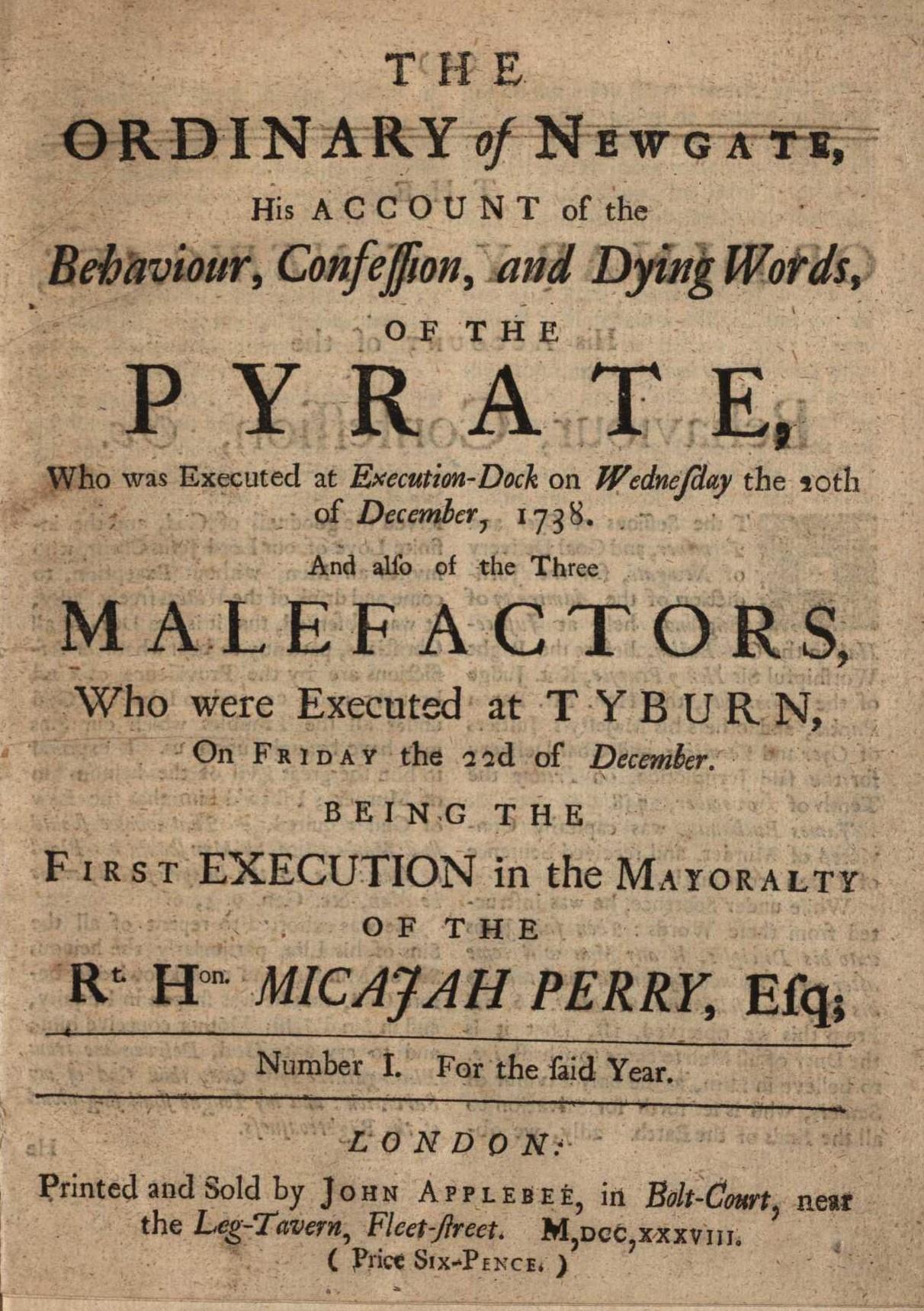
The Caird Library has five examples of these accounts over a range of approximately fifty years, with the majority of the individuals featured convicted of piracy. They provide a fascinating insight into the lives of these men and elite attitudes towards criminality. One account distinct from the others due to the conviction of high-treason rather than piracy is that of Thomas Rounce (RMG ID: PBB0243). Rounce was alleged to have joined the Spanish under the commission of the King of Spain, when the British ship he served on was captured by Spanish privateers. The account is also notable as it contains, in addition to the usual biographical material, an appendix featuring speeches made by Rounce in his cell and a letter he sent to his father the night before his execution:
‘[I] implore your pardon for all the offences I have committed against you, particularly my frequent robbing you; forgive me, dear father, forgive me I beseech you, your dying son conjures you to forgive him, and hopes that God will likewise forgive him.’ (RMG ID: PBB0243)
Whilst the natures of crimes committed within the Ordinary of Newgate’s Accounts differ in type and degree, repentance and confession are a consistent theme. Even those who had initially rejected the services of the Ordinary such as Alexander Dozell (RMG ID: PBB1031), who harboured such animosity to Paul Lorrain, the Ordinary in 1715, that he threatened to ‘do [him] some mischief or other before he dy’d, or haunt me afterwards’, often saw the error of their ways in the moments before his execution:
‘He desir’d my prayers, which he had, and my Pardon also, which he begg’d, for his rude and unjust behaviour towards me.’ (RMG ID: PBB1031)
Such drastic changes of heart were commonplace in the accounts and served to enhance the moral purpose of the publication. The Ordinary sought to teach readers about the dangers of sin and temptation through demonstrating the path of immorality the convict had taken. This often followed the formula that sin leads to crime which in turn leads to the gallows. Essentially, the Ordinary recounted the accused’s life, demonstrating how small misdemeanours such as missing church led to the life of crime they had been condemned for. The hope was this would encourage readers to embrace the teachings of Christianity to avoid a similar fate. The confessions and repentance compounded these ideas, with the words of a condemned man holding more weight – the idea being a dying man does not lie. As such, when in their final moments these men begged the ordinary’s forgiveness, not only did it confirm salvation was available to all, but also validated the moral message the accounts sought to provide. Paul Lorrain felt extremely strongly about this aspect of the Accounts declaring to the House of Commons in 1712 that they contained:
‘Nothing but DIVINITY, DEVOTION, and what may be most Useful to the World', appearing 'for the general satisfaction of the Publick' and of value both to 'Good Men, in informing them in what they desire and have an Interest to Know' and to the Wicked, in reforming them in what they are so very defective, and making them sensible of the Dangers and Miseries which attend a vicious and ill Course of Life, and plainly shewing them how to avoid an Untimely and Shameful Death in this World, and an Eternal one in the next.’
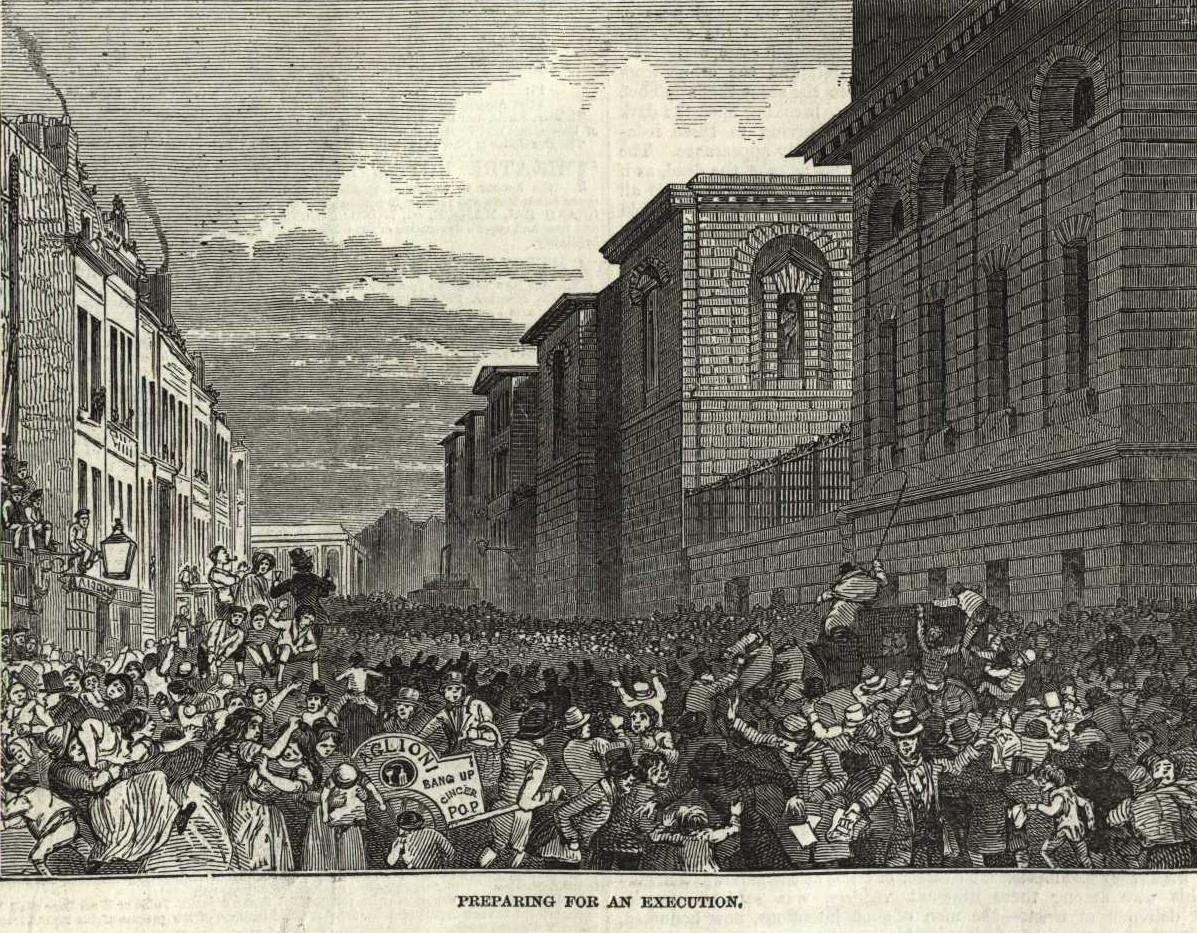
Whilst the accounts were undoubtedly designed to influence the morality of the general society and promote the teachings of Christianity, their other purpose served seemingly as an antithesis of these ideas. As alluded to earlier, the accounts proved to be an incredibly profitable venture for the Ordinary of Newgate due to their popularity. For instance, Lorrain received £200 a year in income from them, quite significant in comparison to his remuneration as Ordinary of £35 a year. Whilst Lorrain was not alone in recognising the profitable potential of the Ordinary’s position – one of his predecessors, John Allen, was dismissed for extortion and undue practice – he was responsible for the transformation of the publication into a lucrative commercial asset. He introduced advertisements and denounced rival publications, declaring his the only ‘true account’. As the profitable nature of the Accounts became more infamous and several prisoners refused to acknowledge to their crimes, Lorraine and his contemporaries extorted confessions through the denial of sacrament or declarations of damnation, should the prisoner continue to refuse. It seems the morality and avoidance of sin the Ordinary was at pains to preach, did not apply to him when there was profit to be made.
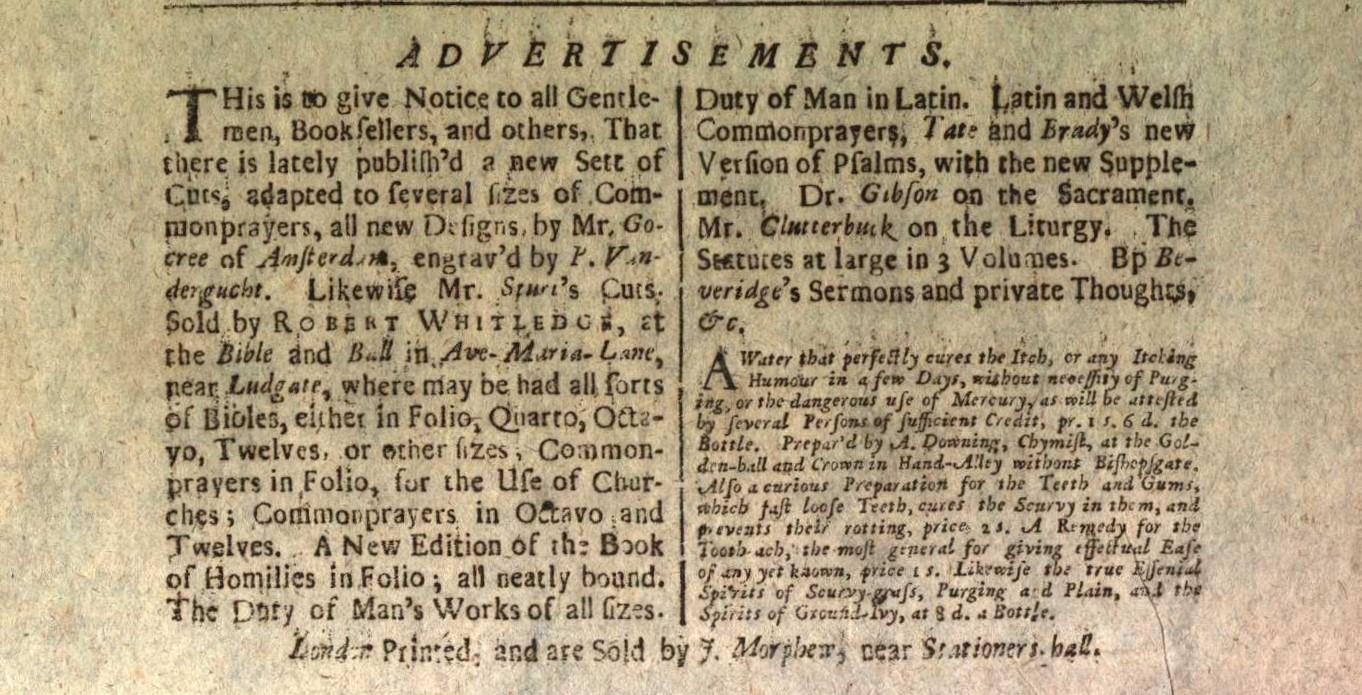
Whilst the financial achievements of the Ordinary of Newgate’s Accounts were a blessing for those involved, they also, in part, led to its downfall. Its success led to the rise of competitors over the latter half of the eighteenth century, and this combined the introduction of ministers from other denominations such as Catholics and Jews, meant the Ordinary’s monopoly over the condemned ended. Simultaneously, the popularity of the genre declined steeply, partly due to this saturation of the market, but also due to a paradigm shift in perception of criminals. Previously, the condemned were portrayed and perceived as an ‘everyman’, someone the general public could relate to, which allowed the Ordinary to claim Christianity could assist the reader in avoiding the same path. Yet this idea gradually evaporated, with criminals viewed instead as deriving from an intellectually and morally inferior class, with whom the general population shared no characteristics. Shifts in perception and waning interest in the genre signalled the end for the Accounts as they provided neither instruction nor entertainment any longer. Publication slowed until 1772 when the final issue was published.
The story behind the conception, life and decline of the Ordinary of Newgate’s Accounts is a fascinating one, littered with complex characters, seemingly disjointed motives and a fluctuating public consciousness. With all these mitigating factors the historical value of the Accounts can easily be dismissed, each issue assumed to contain at best embellishments and at worst total fabrications. It is perhaps surprising then, that research into the contents of the Accounts by Peter Linebaugh found the majority of biographical information on prisoners, including the place and date of birth, occupation, religion and accounts of their crimes, was accurate – corroborated by parish registers and other external sources. Furthermore, clues in the language and tone of convicts’ accounts suggests they may indeed have come straight from the mouth of the convict with little to no altering by the Ordinary. This makes the Accounts a unique insight into the consciousness and minds of eighteenth century prisoners, and an invaluable biographical source for those whose lives may otherwise have been forgotten to history.
To view these items in the Caird Library and Archive, search for the Ordinary of Newgate's Accounts in our library catalogue.
By Jon Earle, Library Assistant
